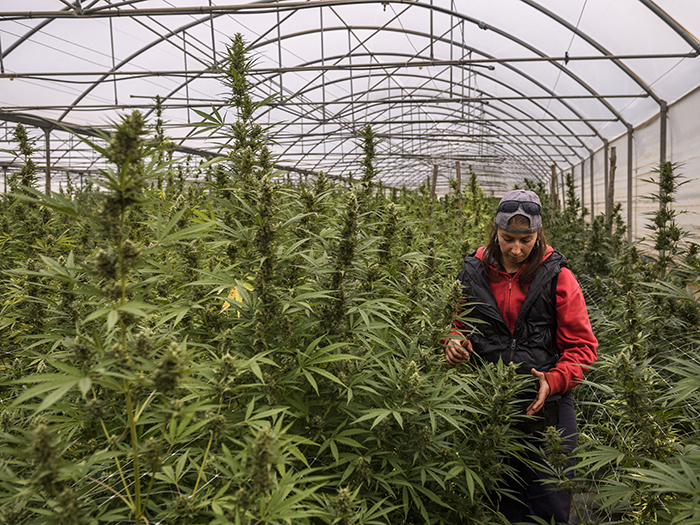5 Evolving Workers’ Comp Losses in the Cannabis Industry

The types of workplace injuries experienced in the cannabis industry can vary according to the size of an operation, the extent to which it is vertically integrated or not, and which segment of the industry is its focus.
By and large, they are not too different from similar industries, like vineyards, which have a similar mix of agriculture, processing, distribution and retail.
The types of injuries can vary according to the size of an operation, the extent to which it is vertically integrated or not, and which segment of the industry is its focus. Here are five of the most common.
1) Repetitive Stress
Repetitive motion exposures can arise in processing and packing operations, as well as on the retail end, but they can vary by the company’s size and heterogeneity.
“Typically, if you’re doing a repetitive task and you have the manpower, you can rotate employees through different positions to break it up, use different muscle groups for different tasks,” said Win Williams, senior vice president and risk services lead for HUB International’s cannabis specialty practice.
“In a smaller company, if they have to wear a ton of hats and they’re doing different roles, that job rotation is built in, basically. For the larger companies, if they’re sitting at a rolling table or a trimming table all day every day, then the company does have to be mindful of that and take proactive steps to get some sort of job rotation. And that helps not only from an ergo stand standpoint, but also from a cross training standpoint, too, so they can be a little more nimble with their staff.
2) Burns and Cuts
Cannabis manufacturing includes extracting essences for processed products as well as trimming and preparing the plants for packaging.
“On the manufacturing side, doing the extraction, burns in the workplace, whether it’s from butane or what have you, we’ve seen loss activity there,” said Cameron Ward, vice president commercial programs, who runs the workers comp department at CannGen Insurance Services, LLC.
“Then you get the everyday bumps and bruises and cuts from handling flower.”
3) Ergonomics
“Ergo injuries pop up on loss runs fairly frequently,” said Williams, who sees it most prominently among growers.
“Certainly, there are some unique challenges on the growing operations. There could be a lot of ergonomic exposures such as lifting and carrying bags of grow media or pushing large trays of plants from where one area of the grow facility to another.”
4) Transportation
As with many industries, the cannabis industry is struggling to find driver. “It’s very hard to find good drivers these days,” said Williams. “But if a company doesn’t take the time to carefully screen the drivers, they may be hiring unsafe drivers, which could lead to a crash resulting in injuries, property damage, loss of product, all kinds of things. The take-away is, even though it’s a difficult time to find drivers, screen applicants carefully so you’re not hiring a future problem.”
Ward agreed” “We’ve seen a lot on the transportation front. Whether they’re using company vehicles or self-owned vehicles, there’s a lot of activity in the general market of the B2C delivery, direct to the consumer, where they’re basically operating as Uber Eats, drivers delivering your cannabis. We’ve seen some losses there.”
5) Workplace Violence
There is no indication that workplace violence is any more prevalent in the cannabis industry than in any other, but it is an increasingly common concern.
“In the last couple of years, it’s been very tumultuous, with the civil unrest, the mask mandates, vaccinations, all that stuff,” said Jay Virdi, chief sales officer for the cannabis specialty practice group at HUB North America.
“And with the newness of this industry, especially in different states that are kind of starting their cannabis journey, this is all a learning curve.”
Williams pointed out that procedures for dealing with it may not be as fully developed as in more established workplaces.
“It’s one thing to have cameras and guards,” Williams said, “but if they don’t have internal protocols to address an employee harassing another employee or an employee making a threat of violence, if they don’t have an internal process on having those threats reported to HR … and then following up by doing an investigation, making sure they’re credible and if they are credible, how do you handle those threats?” &










